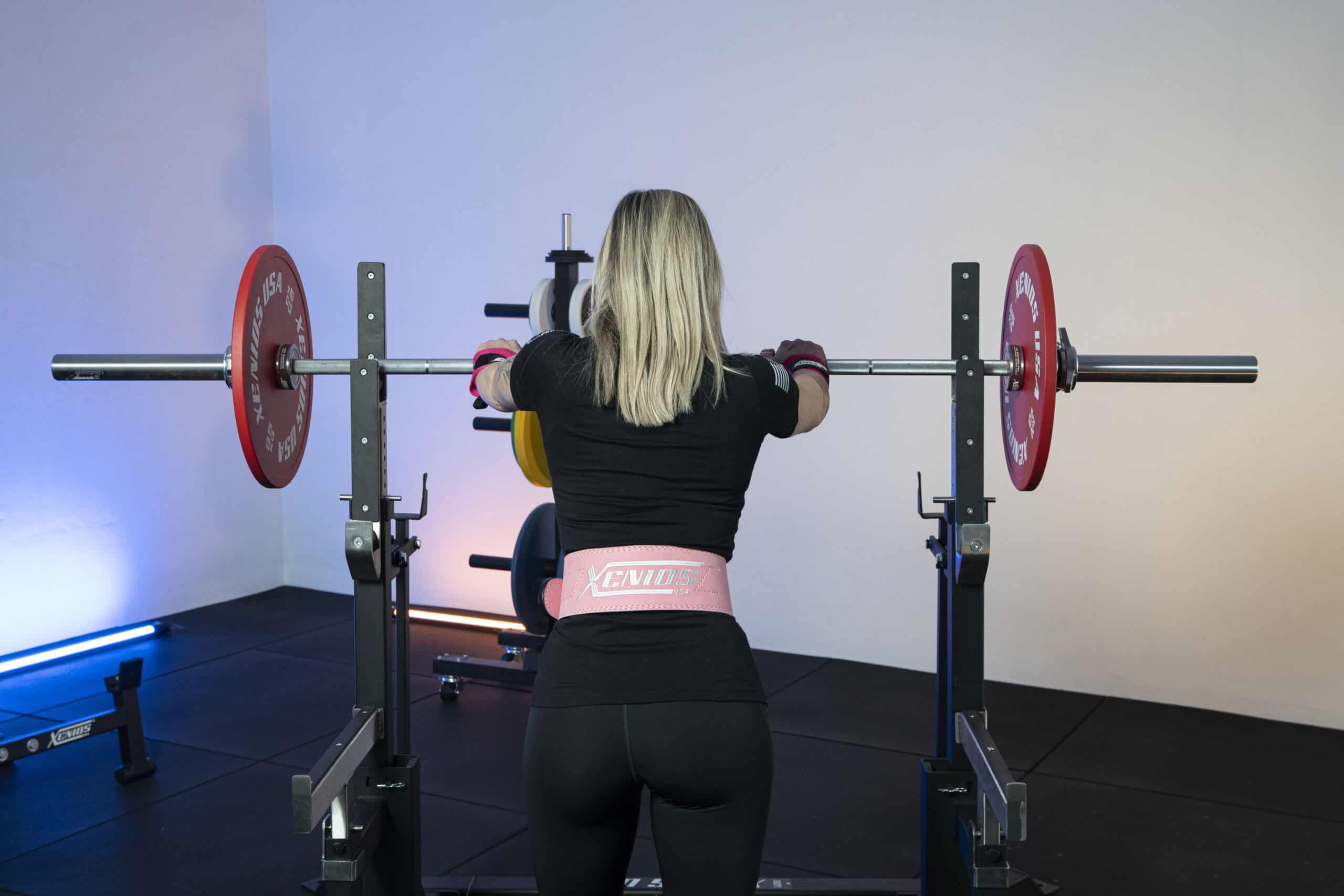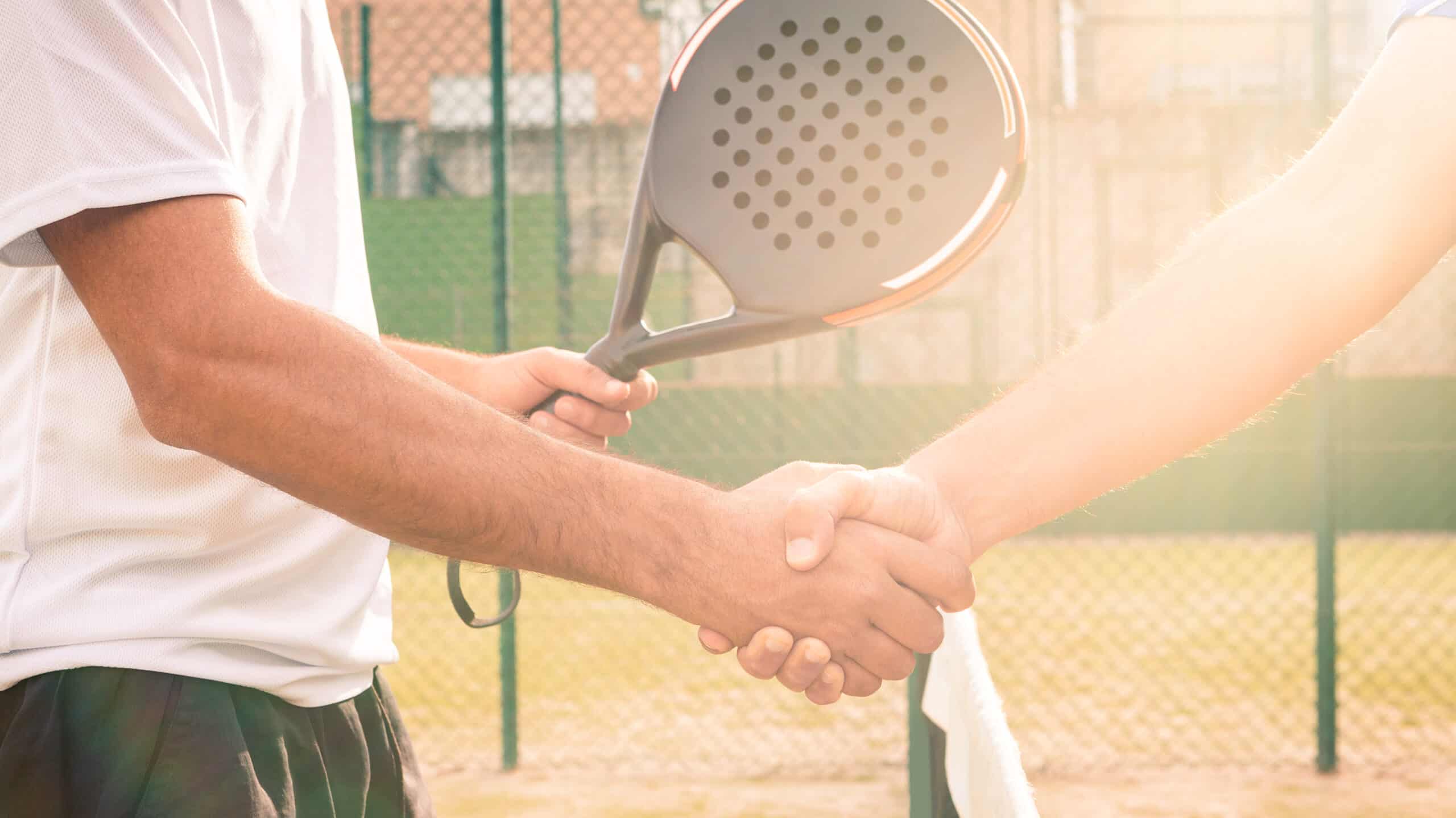The pulley station, also called pulley machine, is one of the best machines to create your own multifunctional gym at home.
In fact, thanks to the pulley machine you can do some cable exercises that will help you strengthen your back.
Today we will look at the benefits of this workout, what exercises you can perform and some tips. And if you want to know the difference between free and cable weight training, stick with it until the end.
Start ?
Gym machines: introduction
Among the various gym machines such as the leg press, all cardio equipment and barbells, the pulley machine is definitely a great tool to use to train your back
With this machine you can perform various exercises perfect for this part of the body but you have to pay the right attention. As you know, when you train your back it’s easy to get hurt, whether you train in the gym or at home
For this reason, learning the movement at its best is the number one piece of advice I would like to give you.
Don’t be in a hurry: learn how to perform the exercises perfectly and only then start loading, please.
But why should you train on cables ?
Benefits of cable training
When we talk about cable training, we don’t just mean the one done with the pulley station but there is also the cable crossover, lateral raises and many others
The benefits you will have from training with cables are different.
The first is insulation.
Cables allow you to isolate large muscle groups such as the pectorals, shoulders, and back.
Most exercises done with free weights that train these parts of the body also use the auxiliary muscles. As a result, you put less strain on your target muscles.
Thanks to the cables, you can work on these muscles more precisely, and this also allows you to train more variedly: this is the second advantage.
With cable exercises, you can alternate between stimuli and working angles.
The benefits are twofold: you get rid of boredom and train more thoroughly.
Sometimes repeating the same exercises over and over again becomes heavy. That’s why it’s important to give movement to the board: you’ll regain enthusiasm and charge.
Plus, your muscles will benefit from this change.
Finally, some specific exercises such as the russian twist are also perfect for training the obliques and toning the waistline.
Exercises with isotonic machines
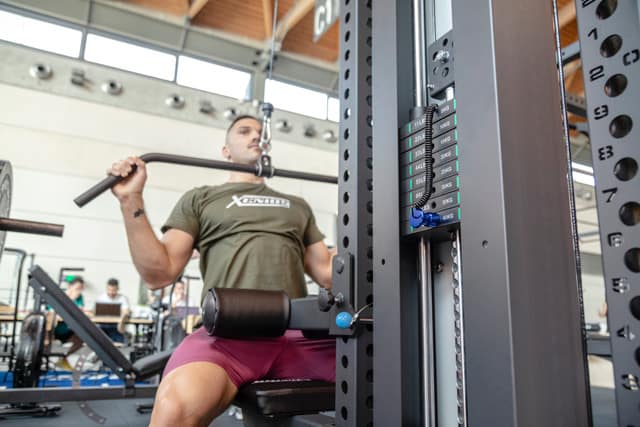
The term “isotonic machine” refers to any machine that allows a weight to be moved using levers or pulleys.
There are isotonic machines for the upper body, such as the Pectoral Machine, the Chest Press or the Lat Machine.
Or you can train your midsection and strengthen your core with the Abdominal Machine.
Finally, you can decide to focus on your lower muscles with the Leg Extension or Leg Press.
Among all the isotonic machines we also have the pulley station that strengthens the back muscles.
Let’s see what exercises you can do…
Pulley Bass
The most famous exercise is the Low Pulley or Lead Row.
With this movement you train the entire muscles of the back: both the upper and the central part. Also, engage your shoulders.
You can perform this exercise with two hands, as is usually done, or train one arm at a time to reduce any disparities between the right and left side of the body.
How does it work ?
The first step is always to get into the starting position.
First of all, sit down and place your feet on the platform with your knees slightly bent.
Activate the scapular set-up with your shoulders away from your ears, shoulder blades slightly adducted, and chest out.
Maintain the scapular set-up for the duration of the exercise: it will help you optimize traction and increase shoulder stability, as well as avoid injuries.
Stretch forward, grip the dumbbell and extend your torso, always keeping the curves of your back in a neutral position.
The elbows should be stretched out.
From this position inhale and begin pulling, keeping your elbows low and at your side.
Focus on working your back and moving your humerus more than your forearm. To help you, imagine that the cable is attached to your elbows and not your hands.
Exhale progressively and finish the movement with your elbows going over the profile of your chest towards the back.
This is the maximum concentric position.
At this point, return to the starting position with your elbows extended.
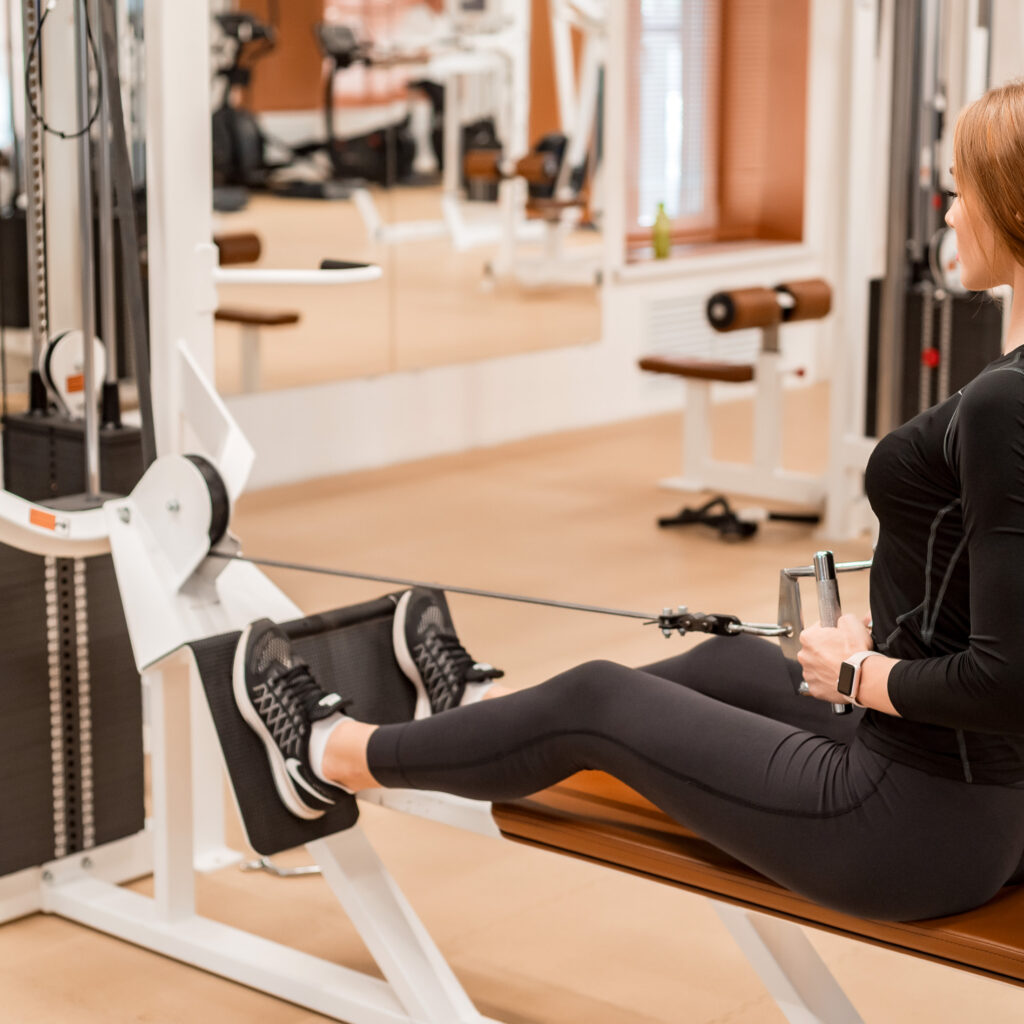
First tip: never keep your knees hyper-extended or too flexed.
Then, use, loads that are suitable for your strength. Don’t overdo it by trying to train with weights that are too high, you will risk performing the exercise poorly.
And always maintain the correct scapular set-up.
If you perform the exercise with your shoulders close to your ears, you put considerable stress on your joints and do not optimally train your target muscles, on the contrary, you have a loss of work.
Also, remember to breathe in sync with the movements and avoid abrupt acceleration or deceleration.
Now let’s talk about variants.
If you want to change the movement slightly, you can decide to start with abduction of the scapula. Simply put, with your shoulders forward and your shoulder blades far apart.
Thanks to this version, you can focus on the latissimus dorsi, which is in a condition of greater elongation.
Warnings: only do this if you are an expert.
Perform this variant only if, starting from the abduction shoulder blades, you are able to first adduct them and then perform the exercise correctly.
Then there is a second variation, in which you start with the torso tilted forward.
Also in this case the latissimus dorsi is stretched more and thus you emphasize the work you do on it.
To perform this variation in the right way, you have to remember to bring your torso to an upright position, when you start to pull, and in flexion, during the return phase.
We have already mentioned the muscle groups involved, but this part deserves a closer look.
In fact, in pulley you not only activate the latissimus dorsi but many other muscles such as the biceps brachii, rhomboids, triceps long head, teres minor and large and trapezius bundles medium.
In short, it is an excellent exercise to train various muscle groups at the same time.
In addition, you can perform the variations we talked about above to focus on the latissimus latsi and carry out a more targeted workout.
High pulley
In this exercise you change the angle of the working angle by placing the pulley higher.
Thanks to this change, your torso is more inclined, and you reduce your scapular elevation as you increase its adduction.
Therefore, involve the central area of the back more.
For the rest, the exercise is carried out in the same way as the low pulley with the same precautions and possible variations.
I remind you to learn the movement well before you start charging and thus avoid getting hurt and risking an injury that will make you stay at home for who knows how long.
Start weightless or with low loads, learn the exercise and only then increase.
Differences between cable training and free weights
When you decide to compare cable training with free weights, the differences that emerge are different and also depend on habits and lines of thought.
But let’s talk about the objective characteristics.
First of all, free weights are cheaper and much easier to buy.
On the other hand, in cable training, you need machines that have a higher price and take up more space, in case you train at home.
the world of free weights is wider as small equipment such as dumbbells or kettlebells can be used, which are easily transportable from one area of the room to another With cables, of course, we are limited to the movements that the machine allows us to perform, which are more limited
As we have seen before, thanks to cables it is easier to isolate a muscle group while in free weights it is more difficult.
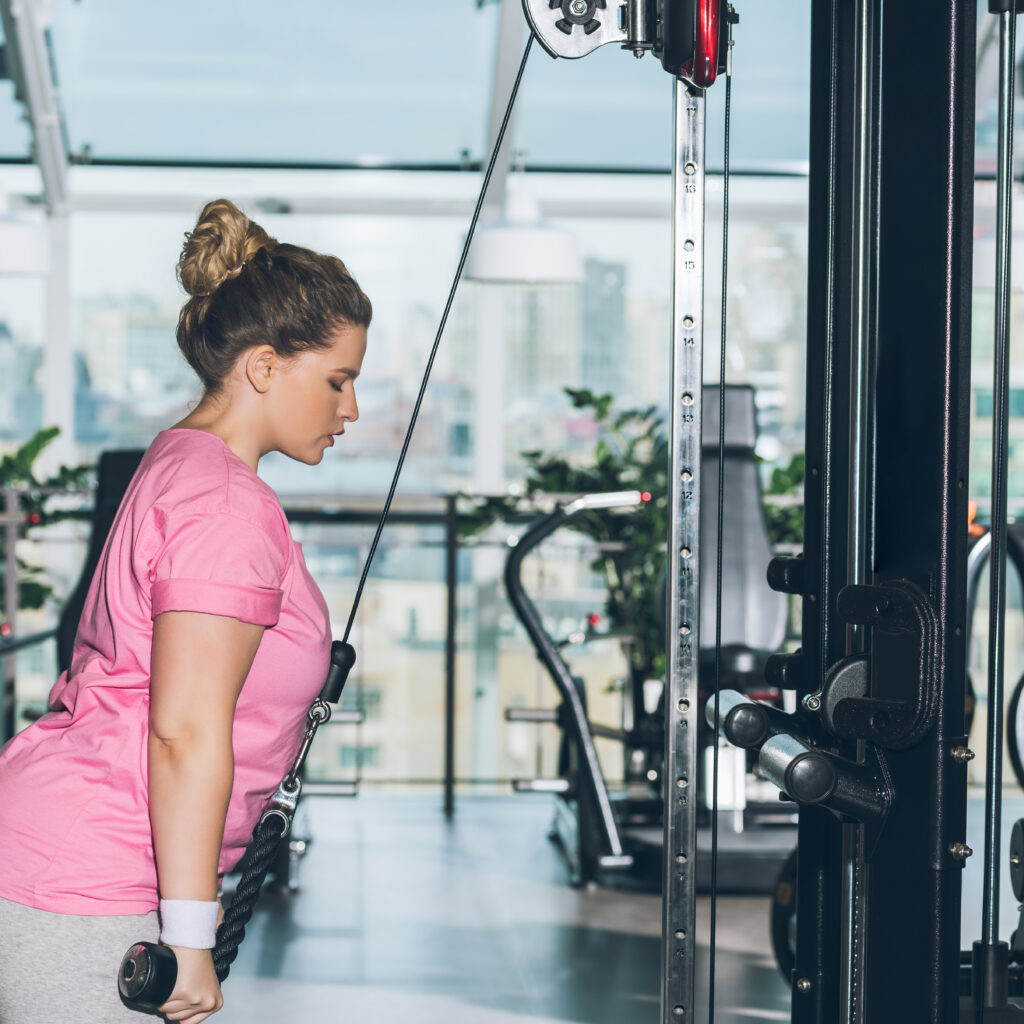
For a beginner who is new to training, it is important to start with a cable isotonic machine, as this allows you to learn the correct movement.
Training with free weights requires greater mastery of the equipment, which is why it is more complex to learn. In cable training, on the other hand, you are “guided” by the machine and therefore learn faster.
Another difference that should not be underestimated is injuries.
In fact, usually the use of free weights involves a greater risk of injury due to the characteristics we have talked about: it is more difficult to learn, you need greater coordination, …
Cables, on the other hand, have a lower risk.
Finally, with weights we have a higher blood pressure rise and therefore it is essential to learn the correct breathing technique.
Obviously, it is also important with cables, but the pressure rise is smaller, although it must still be controlled.
Conclusion
In this article we have seen the benefits of cable training and how the pulley station can help you train your back and shoulders thanks to two exercises: the low and high pulley.
Always keep the tips in mind and follow them to perform the movements correctly and safely.
This way you won’t get hurt and you’ll train your muscles to the fullest.
Finally, we understood the differences between cables and free weights and analyzed the pros and cons of both.
I hope this short guide has been helpful to you.
I just have to wish you a good workout !

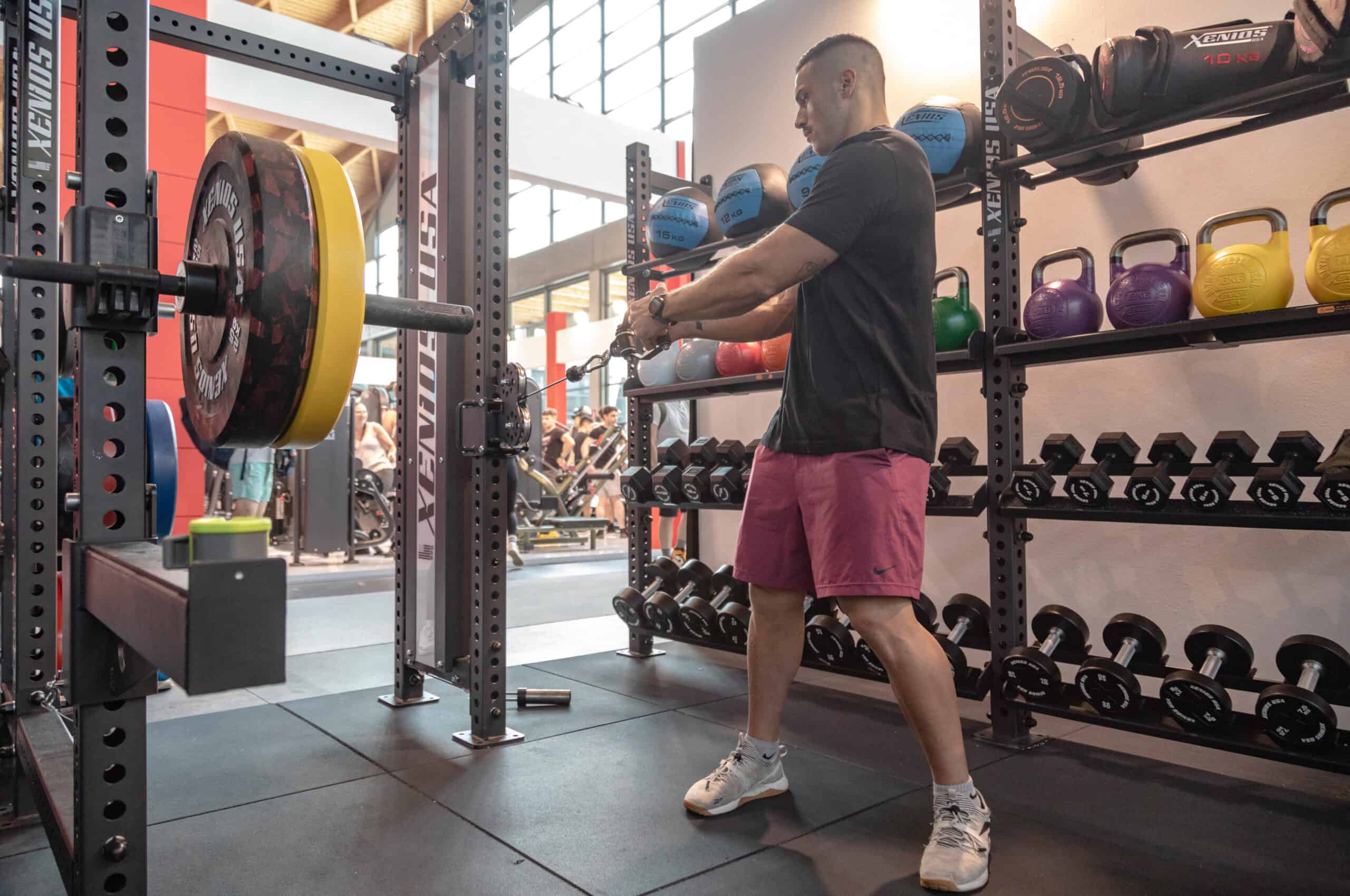

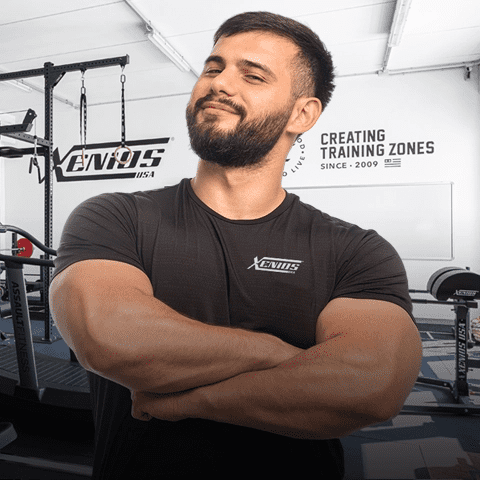
 Since 2009, we’ve been by your side, helping you create the perfect training spaces for Cross Training Boxes, Personal Trainer Studios, and professional Home Gyms.
Since 2009, we’ve been by your side, helping you create the perfect training spaces for Cross Training Boxes, Personal Trainer Studios, and professional Home Gyms.

